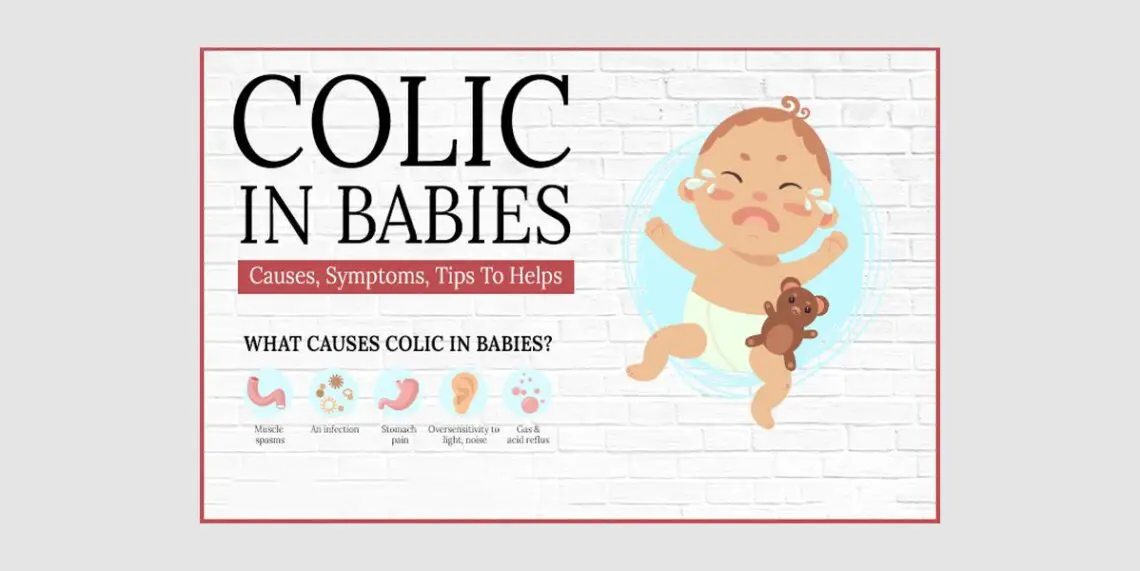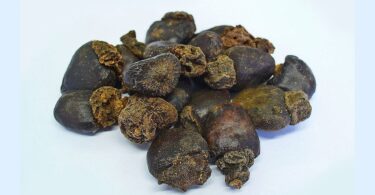INTRODUCTION:
“People who say they sleep like a baby usually don’t have one.” Listening to an inconsolable crying new-born baby can be extremely distressful for parents and family. Colic leads to prolonged spans of inconsolable crying. Parenting a cranky baby puts forth a huge challenge. A baby is unable to explain its problem which makes the diagnosis of this disease a difficult task. Despite this condition it should be noted that statistically speaking these babies generally turn into healthy babies.
It is also comforting to know that such problems generally persist in babies up to the age of 4 months.
WHAT IS INFANTILE COLIC?
An infantile colic is defined as episodes of crying for more than 3 hours a day, for more than 3 days a week for 3 weeks in an otherwise healthy and well fed infant between the ages of 2 weeks and 4 months. But, it is important for parents to know that not all fussy infants suffer from colic. It is normal for most infants to cry for 2-4 hours per day spread across a period of 24 hours as compared to a colicky baby who cries persistently as stated above.
EPIDEMIOLOGY:
- Infantile Colic is very common, occurring in around 10-30% of infants. It affects males and females equally. Breast-fed and formula-fed infants are equally affected. It is one of the most common reasons for parents to consult their doctor in the first three months of their baby’s life. Smoking and also nicotine replacement therapy during pregnancy have been shown to be risk factors for baby colic.
- A multicentre trial found that mothers who report colic or excessive infant crying have higher scores on the Edinburgh Postnatal Depression Scale (EPDS), with increased odds of high scores at six months even if the crying is resolved.
- Baby colic may be associated with intolerance to cow’s milk in some cases. The composition of intestinal microbes, especially an inadequate amount of lactobacilli and an increased concentration of coliforms, has been suggested in some studies to influence the pathogenesis of baby colic.
WHAT CAUSES BABY COLIC?
The cause of colic is generally unknown. However, some theories behind what could be the possible cause are:
- Immature nervous or digestive system
- The baby needs comforting, or is over or under-stimulated by light, noise
- The baby may have swallowed air, especially when feeding
- The baby may be reacting to something in the mother’s diet (if the baby is breastfed)
- The baby is allergic to some foods, such as milk (if the baby is on formula).
- Fewer than 5% of infants who cry excessively may have an underlying organic disease like Constipation, Gastroesophageal Reflux Disease, Anal fissure, Subdural Haematomas, Infection –of the ears or urinary tract, Pressure or inflammation of the brain and nervous system, Eye trouble – like a scratch or increased pressure, Irregular heartbeat, Injury to bones, muscles, or fingers, Infantile Migraine.
PRESENTING SYMPTOMS OF A COLICKY INFANT:
There are no clear symptoms seen in an infant considered as having colic and diagnosis is generally through exclusion. Colic is diagnosed after other potential causes of crying are ruled out and the physician is sure that the infant is otherwise healthy. Some common features of colic may be:
- Inconsolable crying – typically, high pitched and occurring frequently in the afternoon and evening
- The crying or fussing most frequently begins suddenly and often after a feed
- The baby cries for more than 3 hours on at least three occasions a week over the course of at least 3 weeks, but is otherwise healthy.
- Baby kicks a lot, pulls his legs up close, and makes tight fists.
- Baby’s abdomen seems to be distended, prominent or hard
- Baby burps and passes gas often
- The crying sounds as if the baby is in great pain
- Baby spits up frequently after feeding
- There may be flushing of face
It is certainly known that amongst all colicky babies, there are factors that may worsen the colic symptoms:
- Overfeeding in an attempt to lessen crying
- Feeding certain foods, especially those with high sugar content (for example, undiluted juices), may increase the amount of gas in the intestine and worsen the situation
- The presence of excessive anger, anxiety, fear, or excitement in the household
There are certain features which indicate need for a special concern:
- Elevated temperature
- History of breathing problems
- Poor weight gain
Red flags which indicate a need to rule out organic causes and may need further investigations:
- Vomiting (green or yellow, bloody or occurring more than 5/day)
- Change in stool (constipation or diarrhoea, especially with blood or mucous)
- Abnormal temperature (a rectal temperature less than 97.0 °F (36.1 °C) or over 100.4 °F (38.0 °C)
- Irritability (crying all day with few calm periods in between)
- Lethargy (excess sleepiness, lack of smiles or interested gaze, weak sucking lasting over 6 hours)
- Poor weight gain (gaining less than 15 gram a day)
MANAGING COLICKY BABIES:
Managing colicky babies is a very stressful phenomenon for parents. Such parents always require support, as they will be anxious and worried as to the cause of crying and their inability to help the baby. It’s important that the physician should be caring and compassionate and offers them reassurance. Main line management is through conservative means. Certain calming measures may be of use to console the crying baby:
- Swaddle your baby with legs flexed
- Hold the baby on its sides or stomach
- Swing the baby side to side or back and forth while supporting the head
- Try giving him more time in a front baby carrier (the kind you wear over your chest)
- Make eye contact, talk, hold the baby
- Take your baby for a ride in the car (but not when you are sleepy)
- Use “white noise” (such as static on the radio or the vacuum cleaner), classical music, or a “heartbeat tape” next to the crib, or make a shushing sound
- Try infant massage
- Put a warm water bottle on your baby’s belly.
- Have baby suck on a pacifier
- Soak baby in a warm bath
- Try an infant swing
- Increase or decrease the amount of stimulation in the environment, like light, noise, heat, cold, etc.
- Watch out for over-stimulation or increased fatigue
Dietary advice:
There is no specific evidence for restricting certain foods or changing over to certain foods. However, some infants benefit from modifications in the diet:
- Change from one cow’s milk formula to another
- Change from a cow’s milk formula to a soy formula
- Change from a regular formula to a “pre-digested,” hypoallergenic formula
- If you’re breastfeeding, avoid eating certain foods such as caffeine, excessive use of milk products, certain vegetables like cabbage, broccoli, cauliflower; nuts, too much animal protein and taking herbal supplements
- If breastfeeding, nurse whenever your baby seems hungry, usually every 2 – 3 hours. Elevate your infant’s head during and after feedings
- If bottle-feeding, ask your baby’s paediatrician to recommend a formula that is not based on cow’s milk and that is not iron-fortified
- Keep the baby in a sitting position when feeding, and massage her back to get rid of gas bubbles. Burp after every ounce or two of milk
- Try the “colic carry” — Place your baby, chest down, on your extended forearm, with his head supported by your hand and his legs on either side of your elbow. Use your other hand to provide additional support and walk around with the baby
- If bottle feeding, try to limit milk intake, and if that doesn’t work, avoid limiting milk intake
- If your baby is spitting up, keep him upright after he feeds
MANAGING BABY COLICS WITH HOMOEOPATHY:
Managing a crying and fretful, colicky baby is both stressful and exhausting for parents. At times, they find themselves helpless when nothing works out to soothe the crying baby. The standard advice given by regular G.P.’s is winding techniques, infacol or gripe water. These measures are often ineffective. Here arises the scope of homoeopathy. Homoeopathic medicines not only relieve the baby’s pain and discomfort but also help to build up the immature digestive system. Homoeopathic medicines accentuate the natural process of healing without any adverse effects and thereby help in development of the baby. However, it’s a challenge to get a detailed history as the baby can’t talk. So, the physician should have the skills of keen observation and sharp senses in order to pick up the characteristic symptoms.
The following hints during history taking may help him to build a totality in order to make a suitable prescription:
- Baby’s posture during pain e.g. Doubling up, lying on painful or painless side, stretching out, etc.
- Factors which bring about relief e.g. Carrying, rocking, applying pressure, rubbing, massaging
- When is the colic worst, like morning, night, before eating, after eating, before sleep, during sleep, before stool, during or after stool
- Other aggravating factors like motion, jar, movement
- Emotional factors that help to either pacify or aggravate the baby like: carrying, rocking, holding, touching, company, etc.
- Stool – colour, consistency, odour, constipation, diarrhoea
- Abdomen – distension, firm, hard, soft, noises from abdomen like gurgling
- Appetite, hunger, thirst, thermals
- Kind of cry – whining, moaning, high pitched, low pitched, screaming, howling etc.
- Mother’s emotional status – angry, disturbed, anxious, fearful, depressed etc.
CASE OF BABY ANAYA:
This is a case of an 8 week old baby who suffered from infantile colic from the 3rd week of age. She was breast fed from birth. The mother had tried all sorts of usual medications and advice given by doctors, but nothing seemed to help the baby. So, she thought of trying homoeopathy. The baby would have bouts of inconsolable crying throughout the day. She would draw her legs up while having this episode and would feel better by being held. She would also cry frequently after midnight. She had to be held all the time and would start crying again if put down on the bed. She would feel much better when the mother held her in a manner that would put a firm pressure on her tummy.
I prescribed Colocynth 30C, 3 times a day and asked the mother to come for a follow up after 4 days.
Follow Up on 4th day:
To my surprise there was a drastic change in the baby’s condition. The episodes of crying had reduced. She was feeding much better than before. She looked more comfortable and happy. The mother said that now the entire family was much happier and relaxed. The baby would also lie down on the bed and did not need as much comforting and holding as earlier. Her sleep was longer and more sound.
I now reduced the doses of Colocynth 30C to 2 times a day and asked the mother to taper off the doses as further improvement sets in.
HOMOEOPATHY FOR COLICS:
Given below are some homoeopathic remedies which have been found to be beneficial for infantile colic and may be prescribed when the symptoms match:
BELLADONNA:
There is a sudden onset of intense, spasmodic pains. The pains come and go suddenly. Any jar, motion, movement, light, touch may bring on the pain. There is flushing of face with colic. Bending forward may relieve the pains. Baby feels comfortable by lying on abdomen and from pressure.
COLOCYNTH:
Colocynth babies are very irritable and restless. They feel better by applying firm pressure to the abdomen, by laying them over the knee or shoulder. The pain is also better by passing flatus. The baby feels better by doubling up, i.e. folding the legs up to the chest. Baby draws the legs up to get relief. Pains may occur after a fit of anger in the nursing mother.
LYCOPODIUM:
Lycopodium babies suffer from flatulent colic. There’s excessive accumulation of gas and the baby is seen to be either burping or passing flatus. There is much rumbling in the abdomen. The colic may take place between 4p.m. – 8 p.m. which is the aggravating period of Lycopodium. Lycopodium babies are irritable and cross. Their abdomen may be distended and firm to touch, due to accumulation of gases. They cannot bear pressure on the abdomen and so they want their diaper to be tied loosely. Baby may be better by lying on their right side.
CHAMOMILA:
A Chamomila baby is irritable to the highest degree. He appears angry and distressed. He screams, howls and whines. Violent with pains, he may kick the mother. These babies are extremely oversensitive to light, noise, touch. He is better by being held and being rocked about slowly. Baby also feels better by warm application. It’s a good remedy for problems occurring during dentition. Babies often suffer from greenish and offensive diarrhoea during the dentition period.
MAGNESIA PHOSPHORICA:
The spasmodic pains are relieved by gentle pressure like rubbing the tummy gently or by bending double. The pain is also better by warmth applied to the abdomen.
Pains are worse from the least movement, motion and jar. Pains are better from rest and by pressure. The infant may want to lie on the painful side and may feel better by pressing the abdomen. The baby may be seen to feel comfortable by lying still with legs drawn up. The Bryonia baby is very irritable and prefers to lie alone in a cool, quiet and dark room without being disturbed.
RHEUM :
It is a very good remedy for infants for complaints occurring during the dentition period. Colic with much screaming. The child is weepy and very restless.
Excessive salivation accompanies the colic. Colic is better by doubling up and the child is seen to be drawing the legs up. The pain is worse from uncovering any part of the body, motion, feeding, before and during stools. Sourness is a hallmark of the remedy. The child smells sour. The discharges like vomitus, stools and sweat are all sour smelling. The colic is better by warmth and wrapping up the child.
JALAPA:
The baby is good the entire day, but screams and tosses about all night. The infant is very restless and troublesome. Lots of flatulence and the tummy is distended. Colic may be accompanied by thin, muddy stools. There may be coldness of face during colic.
CATARIA NEPETA:
In this remedy there is severe colic compelling the baby to flex its thighs. There is twisting of the body during colic. The child cries and whines.
SENNA:
It is very useful for flatulent colic when the baby is full of wind. The baby is constipated which leads to colic and much flatulence.







v good aditi
Thank you sir.
Very nice article Dr. aditi , keep it up…….best luck for future
thank you Dr.A.Bhatnagar for sharing.
Very Nice article Dr. Aditi.. the article is so helpful to manage the baby colics with homeopathy..